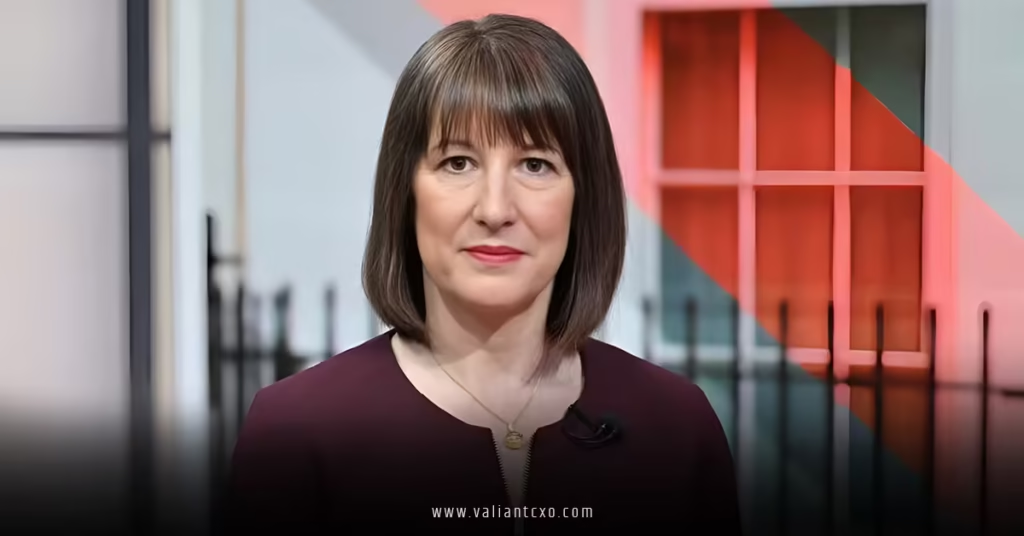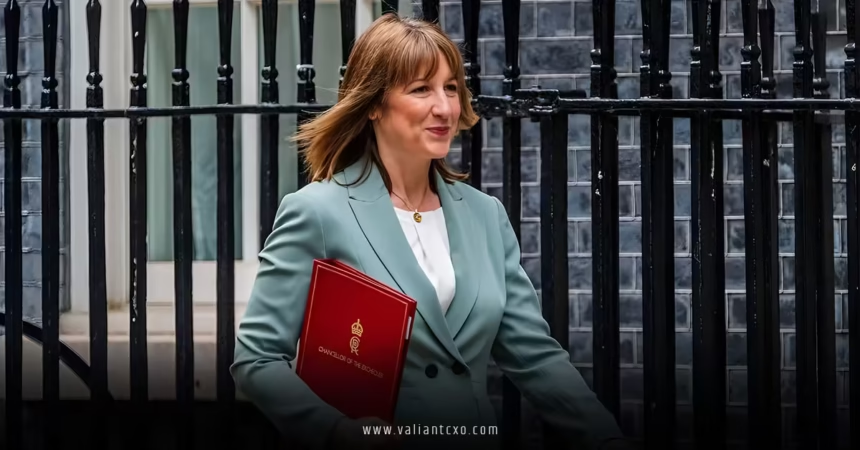Rachel Reeves economic strategy for UK growth isn’t just another set of fiscal tweaks—it’s a full-throttle mission to yank the UK out of its economic slump and into a brighter, buzzing future. Imagine the British economy as a rusty old engine that’s been sputtering along for years, clogged with red tape, underinvestment, and a hangover from Brexit. As Chancellor, Rachel Reeves is rolling up her sleeves, grabbing the wrench, and vowing to rev it up. But will her blueprint actually get us moving? Let’s dive in, shall we? I’ll walk you through the guts of her plan, why it matters to you and me, and what hurdles she might trip over. By the end, you’ll see why this strategy could be the spark we’ve been waiting for—or at least, a damn good try.
Understanding Rachel Reeves Economic Strategy for UK Growth
Picture this: You’re staring at a map of the UK, dotted with factories humming quietly, tech hubs flickering with potential, and construction sites gathering dust. That’s the canvas Rachel Reeves is painting on with her economic strategy for UK growth. Launched right after Labour’s landslide win, it’s all about flipping the script from stagnation to surge. Why now? Because, let’s face it, the UK’s been limping along with growth rates that make a snail look speedy—think 0.1% quarterly blips that leave everyone frustrated.
At its core, Rachel Reeves economic strategy for UK growth rests on three sturdy pillars: stability, reform, and investment. Stability? That’s the bedrock, ensuring no more wild mini-budgets like the one that sent markets into a tailspin under Liz Truss. Reform tackles the bureaucratic beasts holding back progress, from planning permissions to regulatory snarls. And investment? Oh, that’s the fuel—pouring cash into infrastructure, green tech, and skills to make the economy roar.
But here’s the kicker: This isn’t some top-down diktat from Westminster suits. Reeves is all about partnering with local leaders, businesses, and even international allies. Remember her speech at Siemens in Oxfordshire? She hammered home that low growth “is not our destiny,” but it won’t happen without a fight. It’s conversational, almost folksy—Reeves chatting like she’s in your living room, explaining how every pound invested could mean more jobs in your town. And you know what? It resonates because we’ve all felt the pinch: higher bills, stagnant wages, that nagging sense the system’s rigged against the average Joe.
Diving deeper, let’s unpack why this strategy feels fresh. Past governments threw money at problems like confetti at a wedding, but Reeves is surgical. She’s drawing on her economist roots—think Bank of England days—to craft a plan that’s data-driven yet human. Had the UK matched OECD averages since 2010, we’d be £140 billion richer, she says. That’s not just numbers; that’s schools, hospitals, and holidays we missed out on. So, as we explore the nuts and bolts, ask yourself: Could Rachel Reeves economic strategy for UK growth finally bridge that gap?
The Pillars of Rachel Reeves Economic Strategy for UK Growth
Ever built a house of cards? One wobbly base, and the whole thing tumbles. Rachel Reeves gets that, which is why her economic strategy for UK growth is built on those unshakeable pillars. Let’s break them down, one by one, like peeling an onion—teary-eyed at the challenges, but excited by the layers of opportunity underneath.
Pillar 1: Stability – The Anchor in Stormy Seas
First up, stability. In a world where Trump’s tariffs loom like storm clouds and global inflation plays whack-a-mole, Reeves is betting on calm waters to lure investors. She’s locked in fiscal rules via the Budget Responsibility Act—no more borrowing binges that spook the markets. Think of it as a promise ring to the City: “We’re serious about growth, not gimmicks.”
But stability isn’t boring; it’s smart. Reeves has tasked regulators—like those in energy and competition—with a growth-first mindset. She even nudged out the head of the competition watchdog for being too cautious. “Regulate for growth,” she urges, echoing a vibe that’s got business leaders nodding. And get this: Pension reforms are unlocking over £100 billion in “trapped” surpluses, funneled into British projects instead of sitting idle. It’s like giving your grandma’s savings a workout—suddenly, they’re powering new factories or wind farms.
Why does this matter to you? Because without stability, growth is just hot air. Families planning ahead, businesses hiring—none of it sticks if the ground shifts. Rachel Reeves economic strategy for UK growth shines here by blending caution with courage, proving you can be prudent without being paralyzed.
Pillar 2: Reform – Sweeping Away the Cobwebs
Now, reform—the sexy part where Reeves wields the broom. The UK’s planning system? A nightmare of delays that turns a simple road build into a decade-long saga. Her fix? Streamline approvals, especially for housing and infrastructure. We’re talking 1.5 million new homes, with reforms tearing up NIMBY roadblocks. Ever driven past a “build here” sign ignored for years? Yeah, that’s changing.
On skills, Reeves is reforming the system for a gig-economy world. Tackling economic inactivity—over 9 million folks sidelined by health or hopelessness—she’s rolling out targeted training in tech and green jobs. And don’t get me started on the modern industrial strategy: It’s laser-focused on sectors like manufacturing and renewables, partnering with businesses to create “good work” everywhere, from Manchester mills to Scottish wind turbines.
Reform isn’t painless, though. Critics whine about overreach, but Reeves counters with analogies straight from the shop floor: “We’re not cutting corners; we’re clearing the path.” In Rachel Reeves economic strategy for UK growth, these changes aren’t tweaks—they’re transformations, turning red tape into rocket fuel.
Pillar 3: Investment – Pouring Fuel on the Fire
Ah, investment—the heartbeat of Rachel Reeves economic strategy for UK growth. We’re talking big bucks: The National Wealth Fund (NWF) and Office for Investment (OfI) are turbocharging regional pipelines, trialing partnerships in places like Greater Manchester and the North East. Sectors? Tech, green energy, manufacturing—think batteries buzzing in the Midlands or AI labs in Leeds.
The crown jewel? The Oxford-Cambridge Growth Corridor, poised to add £78 billion by 2035. That’s labs, housing, and transport links stitching together a “Silicon Fen” powerhouse. And Heathrow’s third runway? Backed full-throttle, it’s the first major expansion since the ’40s, promising jobs and connections that could supercharge exports.
Reeves isn’t stopping at home. She’s eyeing a Brexit reset—closer EU ties, maybe a youth mobility scheme for under-30s to zip across borders on temp visas. Why? To slash trade barriers and inject fresh talent. It’s like opening windows in a stuffy room: Suddenly, ideas and workers flow, and growth breathes easier. But here’s the rub—will voters buy the long game when short-term pains hit?

Key Initiatives Driving Rachel Reeves Economic Strategy for UK Growth
Zooming in, let’s spotlight the initiatives that make Rachel Reeves economic strategy for UK growth tick. These aren’t pie-in-the-sky dreams; they’re actionable blueprints with timelines and targets.
Unlocking Infrastructure: From Runways to Renewables
Infrastructure’s the backbone, and Reeves is flexing. Backing Heathrow isn’t just about planes—it’s 40,000 jobs and a gateway for global trade. Pair that with offshore wind expansion: The Crown Estate gets borrowing powers to fast-track farms that could power millions. Analogy time: It’s like upgrading from a bicycle to a jet—suddenly, you’re not just keeping up; you’re leading the pack in green energy.
Planning reforms? They’re slashing delays by 50% for key projects. Housebuilding gets a boost too—revising green belt rules to build near transport hubs. Result? More homes, less sprawl, and construction crews busy from dawn till dusk.
Regional Revival: Spreading the Wealth
Forget London-centric growth; Reeves is all about “levelling up” done right. The NWF’s strategic partnerships in West Yorkshire or Glasgow? They’re tailoring investments to local strengths—think advanced manufacturing in the Midlands or life sciences in the North. Metro mayors are in the loop, co-designing pipelines that attract private cash.
Take the Liverpool City Region pilot: Connecting locals to industry expertise, it’s unlocking billions in stalled projects. Ever felt like your town’s an afterthought? These moves say, “Not anymore.” Rachel Reeves economic strategy for UK growth is federal in feel, ensuring prosperity isn’t postcode-dependent.
Green and Digital Thrust: Future-Proofing the Economy
Sustainability’s woven in—Reeves calls it “growth that lasts.” A new industrial strategy spotlights clean tech, with subsidies for electric vehicle batteries and carbon capture. Digital? Skills bootcamps in AI and cyber, partnering with firms like Siemens to upskill thousands.
And the youth scheme? It’s a game-changer, letting 18-30s work abroad temporarily, fostering networks that boomerang back as innovation. Critics call it soft on Brexit, but Reeves sees it as pragmatic: “Growth isn’t zero-sum; it’s shared prosperity.”
Challenges Facing Rachel Reeves Economic Strategy for UK Growth
No plan’s perfect, right? Rachel Reeves economic strategy for UK growth faces headwinds that could gust it off course. Global turbulence—Trump’s tariffs, EU protectionism—threatens exports like a sudden squall. Domestically, high energy costs hobble manufacturers, and the OBR warns infrastructure boosts yield just 0.1% growth per 1% invested—slow burn, not wildfire.
Labour shortages bite too; post-Brexit, sectors like construction limp without EU workers. Then there’s fiscal tightrope: Reeves’ rules cap borrowing, so tax hikes loom if growth lags. Recent GDP dips—0.3% in May—have markets jittery, with inflation at 3.4% tying the Bank of England’s hands.
Yet, Reeves pushes optimism: “Animal spirits” revived through deregulation and opportunity. It’s a gamble—will voters stomach short-term squeezes for long-term gains? As one economist quipped, it’s like dieting: Tough at first, but the results? Transformative if you stick with it.
Potential Impacts of Rachel Reeves Economic Strategy for UK Growth
If it clicks, Rachel Reeves economic strategy for UK growth could rewrite the UK’s story. IMF projections nudge up to 1.6% this year, but with her push, 2% peaks aren’t wild dreams. Jobs? Hundreds of thousands in construction and tech, lifting wages and cutting inactivity.
Regionally, the North could see 5% GDP bumps from investments, narrowing the London chasm. Green wins mean energy security, slashing bills long-term. For you? More affordable homes, stabler prices, that holiday fund finally filling up.
But impacts ripple unevenly—South East booms first, North waits. And globally? A stronger UK bolsters alliances, softening Brexit’s bite. It’s not utopia, but it’s progress: From flatline to flourish.
Conclusion: Why Rachel Reeves Economic Strategy for UK Growth Deserves Your Backing
Wrapping it up, Rachel Reeves economic strategy for UK growth is a clarion call to rebuild, reform, and roar ahead. From stability’s steady hand to reforms’ bold sweeps and investments’ bold bets, it’s a roadmap out of mediocrity. Sure, challenges lurk—global gales, domestic drags—but the vision? Inclusive, innovative, unstoppable. We’ve lost £140 billion to sluggishness; now’s the time to claim it back. Back this plan, chat about it with mates, push your MP—because growth isn’t just for graphs; it’s for our lives. Let’s make it happen, yeah?
Frequently Asked Questions (FAQs)
What are the main pillars of Rachel Reeves economic strategy for UK growth?
The strategy hinges on three pillars: stability to build investor confidence, reform to cut red tape in planning and skills, and investment to fuel infrastructure like the Oxford-Cambridge Corridor and green tech.
How does Rachel Reeves economic strategy for UK growth address regional inequalities?
By partnering with local leaders through the National Wealth Fund, it targets investments in areas like the North East and West Midlands, ensuring growth spreads beyond London for a more balanced UK economy.
Will Rachel Reeves economic strategy for UK growth lead to immediate job creation?
Not overnight—initiatives like Heathrow expansion promise thousands of jobs, but experts say full impacts take years, starting with construction and skills training.
What role does green energy play in Rachel Reeves economic strategy for UK growth?
It’s central, with offshore wind boosts and industrial strategy support for renewables, aiming to cut energy costs and position the UK as a clean tech leader.
How might Brexit affect Rachel Reeves economic strategy for UK growth?
Reeves is pushing a reset with closer EU ties and a youth mobility scheme to ease trade barriers, potentially adding billions by unlocking markets and talent flows.
Read More:valiantcxo.com


